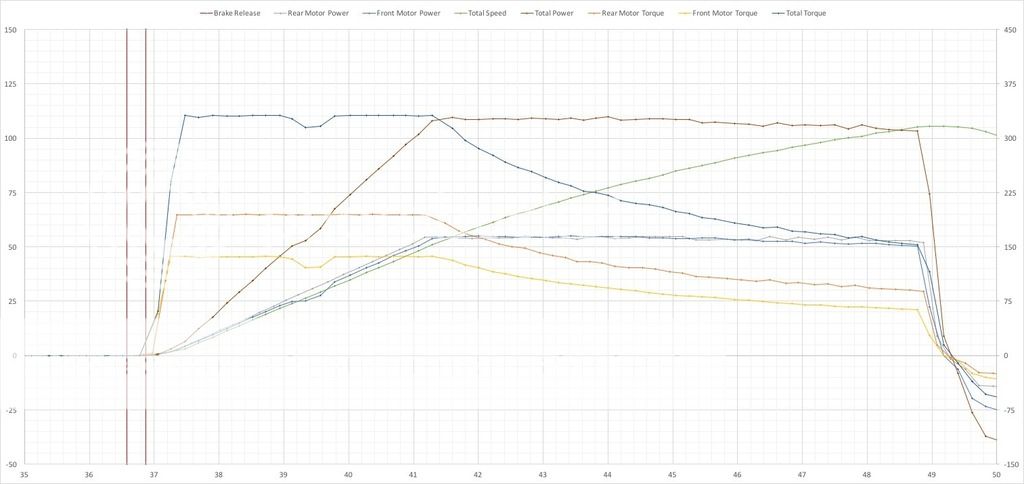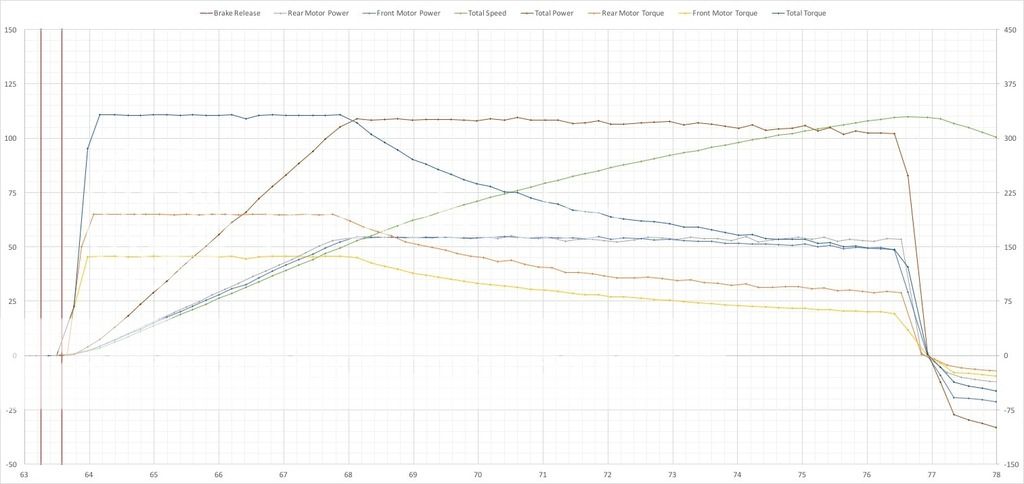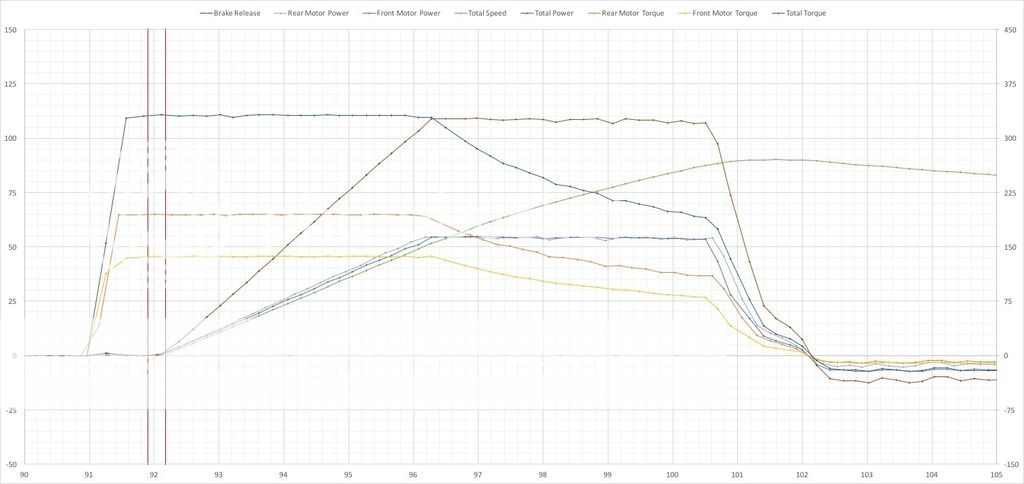anko
Well-known member
Ah, should have explained. Nothing to do with regen braking or whatsoever. This parameter is just revealing the amount of pressure in the brake lines that run to the friction brakes.
When standing still (waiting for the next test to commence) this value will be greater than 0. So, the thought behind adding it to the graph is that when the value goes to 0 the test has started.
But once the test has started, there is no more need to read the value every sweep. In order to keep the sweep time as low as possible, I stop reading brake pressure once it has gone to 0. Problem is that I would have to restart my software in order to do a second test. So, I choose to skip the next 10 sweeps whenever the value goes to 0. Is the value still 0 after that, it will skip another 10 sweeps. Is it not 0, than it will continue to read the value every sweep. And so on. 10 sweeps is just a few seconds, so as long as I stand still for a few seconds at the beginning of the next test, the scanner software will have found a > 0 value and continue to read the value every sweep.
When standing still (waiting for the next test to commence) this value will be greater than 0. So, the thought behind adding it to the graph is that when the value goes to 0 the test has started.
But once the test has started, there is no more need to read the value every sweep. In order to keep the sweep time as low as possible, I stop reading brake pressure once it has gone to 0. Problem is that I would have to restart my software in order to do a second test. So, I choose to skip the next 10 sweeps whenever the value goes to 0. Is the value still 0 after that, it will skip another 10 sweeps. Is it not 0, than it will continue to read the value every sweep. And so on. 10 sweeps is just a few seconds, so as long as I stand still for a few seconds at the beginning of the next test, the scanner software will have found a > 0 value and continue to read the value every sweep.




















